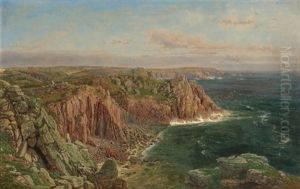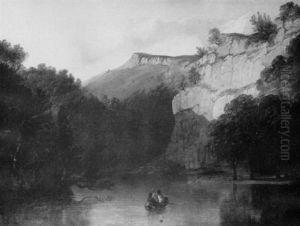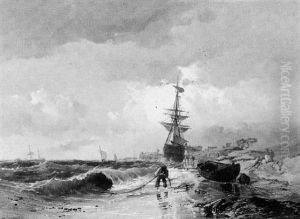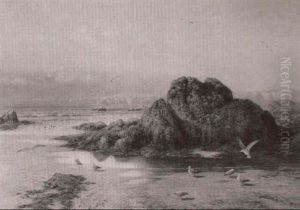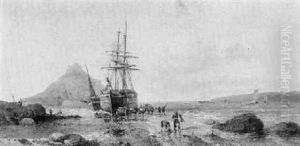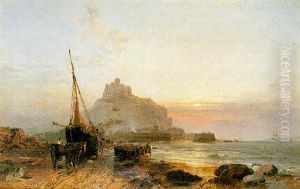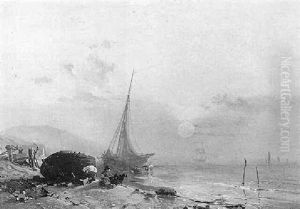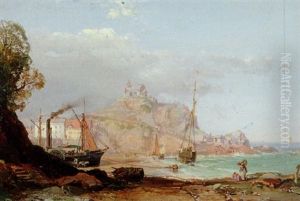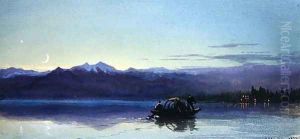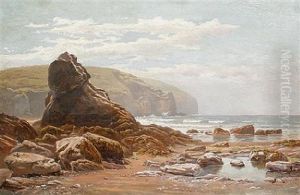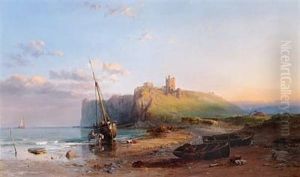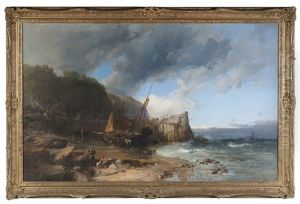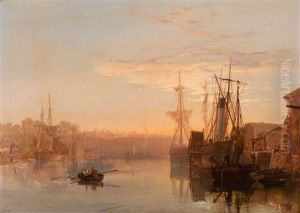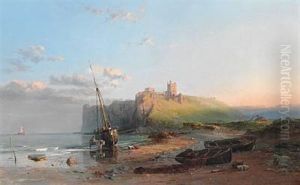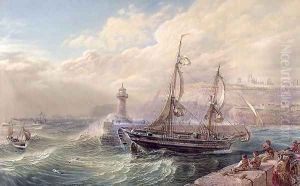Samuel Phillips Jackson Paintings
Samuel Phillips Jackson was an English painter born on January 31, 1830, in Bristol, England. Known for his exquisite watercolor landscapes and coastal scenes, Jackson developed a keen eye for capturing the subtle interplay of light and atmosphere, traits that became hallmarks of his work. His upbringing in Bristol, a city with rich maritime heritage and picturesque landscapes, significantly influenced his choice of subjects and his artistic development.
Jackson's career began to flourish after he moved to London, where he was exposed to the vibrant artistic community and the works of contemporary and classical artists. He became a member of the Royal Institute of Painters in Water Colours (RI), an institution dedicated to the promotion of watercolor painting, where he was highly regarded for his contributions to the medium. Throughout his career, Jackson exhibited regularly at the RI and also at the Royal Academy, earning accolades for his ability to evoke the British countryside's and coastal areas' natural beauty with precision and emotion.
Notably, Jackson's work was characterized by a meticulous attention to detail and a masterful use of color to capture the changing moods of the landscapes he portrayed. His paintings often depicted the serene beauty of the English countryside, the rugged coasts, and occasionally scenes from his travels abroad. His ability to render water, whether the calm surface of a lake or the tumultuous waves of the sea, was particularly admired.
Jackson's contributions to the field of watercolor painting during the Victorian era were significant, as he was part of a movement that sought to elevate the status of watercolor to that of oil painting. Through his teaching and his works, he helped to inspire a generation of artists to explore the possibilities of watercolor, making him a pivotal figure in the history of British art.
Samuel Phillips Jackson passed away on December 5, 1904, leaving behind a legacy of art that continues to be appreciated for its technical skill and its evocative portrayal of the natural world. His works remain in collections around the world, testament to his enduring influence and the timeless appeal of his artistry.
